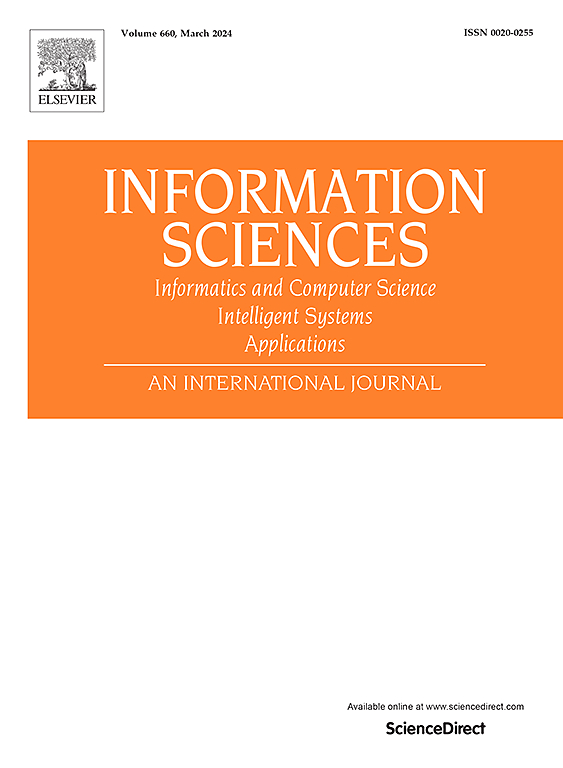多变量时间序列异常检测的基于图的双对比表示学习
IF 6.8
1区 计算机科学
0 COMPUTER SCIENCE, INFORMATION SYSTEMS
引用次数: 0
摘要
多变量时间序列(MTS)的不断增加,加上标记样本的稀缺,推动了无监督异常检测的发展。虽然对比学习在学习判别表征方面显示出了很大的潜力,但现有的基于对比学习的MTS异常检测方法仍然存在表征能力有限和判别能力不足的问题。在本文中,我们提出了一种新的模型,基于图的双对比表示学习,用于检测多变量时间序列中的异常,称为GDCMAD。GDCMAD首先构建了两个关系图来捕获变量间和时间依赖性,然后将改进的基于Kolmogorov-Arnold网络(KAN)的注意机制集成到重构框架中。此外,它还结合了基于lstm的外部对比学习模块,进一步加强了正常模式和异常模式的分离。在6个公开数据集上的实验表明,GDCMAD在异常检测方面的性能优于9种最先进的方法,证实了其对MTS数据的有效性。要访问GDCMAD的源代码,请访问位于https://github.com/Du-Team/GDCMAD的存储库。本文章由计算机程序翻译,如有差异,请以英文原文为准。
GDCMAD: Graph-based dual-contrastive representation learning for multivariate time series anomaly detection
The increasing amount of multivariate time series (MTS), coupled with scarce labeled samples, has driven the development of unsupervised anomaly detection. While contrastive learning has shown promise in learning discriminative representations, existing contrastive learning-based MTS anomaly detection methods still suffer from limited representation power and inadequate discrimination ability. In this paper, we propose a novel model, graph-based dual-contrastive representation learning for detecting anomalies in multivariate time series, called GDCMAD. GDCMAD first constructs two relational graphs for capturing inter-variable and temporal dependencies then integrates an improved Kolmogorov–Arnold network (KAN)-based attention mechanism into a reconstruction framework. Additionally, it incorporates an LSTM-based external contrastive learning module to further enhance the separation between normal and abnormal patterns. Experiments on six public datasets show that GDCMAD achieves better performance than nine state-of-the-art methods in detecting anomalies, confirming its effectiveness for MTS data. To access the source code of GDCMAD, please visit the repository located at https://github.com/Du-Team/GDCMAD.
求助全文
通过发布文献求助,成功后即可免费获取论文全文。
去求助
来源期刊

Information Sciences
工程技术-计算机:信息系统
CiteScore
14.00
自引率
17.30%
发文量
1322
审稿时长
10.4 months
期刊介绍:
Informatics and Computer Science Intelligent Systems Applications is an esteemed international journal that focuses on publishing original and creative research findings in the field of information sciences. We also feature a limited number of timely tutorial and surveying contributions.
Our journal aims to cater to a diverse audience, including researchers, developers, managers, strategic planners, graduate students, and anyone interested in staying up-to-date with cutting-edge research in information science, knowledge engineering, and intelligent systems. While readers are expected to share a common interest in information science, they come from varying backgrounds such as engineering, mathematics, statistics, physics, computer science, cell biology, molecular biology, management science, cognitive science, neurobiology, behavioral sciences, and biochemistry.
 求助内容:
求助内容: 应助结果提醒方式:
应助结果提醒方式:


